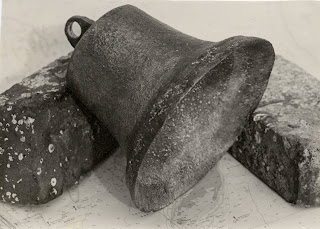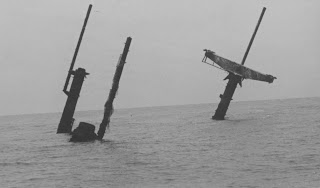 Christmas on the Goodwins
Christmas on the GoodwinsBy David Chamberlain
In the past there were five Lightvessels standing guard over the Goodwin Sands. Life on the Goodwin Lightvessels was mainly a routine that appropriated certain types of men. Being at sea for a month was not everybody’s idea of a perfect job, however, for many ex deep-sea fishermen and deep-sea mariners it was a suitable way to make a living. An ability to get along with your fellow crewmates was also an essential qualification.
The six crewmembers were answerable to the master, who was in turn accountable to Trinity House if things went wrong. The lightvessel had to be manned 24 hours of the day, every day; and a good lookout was always necessary in foul weather conditions that often occurred in and around the Goodwin Sands. Although the crew were paid extra in their pay packets for the days when the incessant foghorn blared out they soon got used to the noise – and few bothered using the earplugs that were issued.
Another dilemma was the weather. Storms would make the lightvessel not only roll but also pitch in a ‘heel and toe’ motion. Nevertheless, the men had faith in the four-ton mushroom anchor that held the ship on station and the 600,000 candlepower light that warned approaching ships of the dangers of the Sands. In their spare time they would often fish off the stern of the vessel to supplement their victuals that each man had to supply himself. The galley and quarters were spotless and every brass part on the lightship was polished to a shine … the men took pride in their vocation.
Christmas was a time of celebration ashore, however, for the sentinels of the Goodwin Sands it would be another working day. The disappointment of having to spend Christmas afloat was dulled by the kindness from the population of the surrounding towns; who realised the hardships that these men had to endure to safeguard shipping. Many extra food parcels and gifts were collected along with a Christmas tree and a large turkey for distribution to the seven sailors.
Even the angling clubs contributed with Deal Angling Club (1919) adopting the East Goodwin lightvessel as their chosen one; Kingsdown Angling Club went for the South Goodwin, as it was closer to the club. When the weather was calm the boatmen managed to take their boats out and delivered the presents alongside the lightvessel. However, that close to Christmas the sea was normally to rough for them to undertake the trip. It was then left up to the lifeboat to make the journey with a few selected guests.
Eventually, and with technology, the Lightvessels became unmanned and were replaced by large buoys that marked the dangerous sandbank. The South Goodwin was towed away on the 26th of July 2006 and of the original five ships there is only one left on watch, the East Goodwin Lightvessel. She can be seen seven nautical miles from Deal Pier flashing a single beam of light every 15 seconds … which can be seen for 26 miles.






